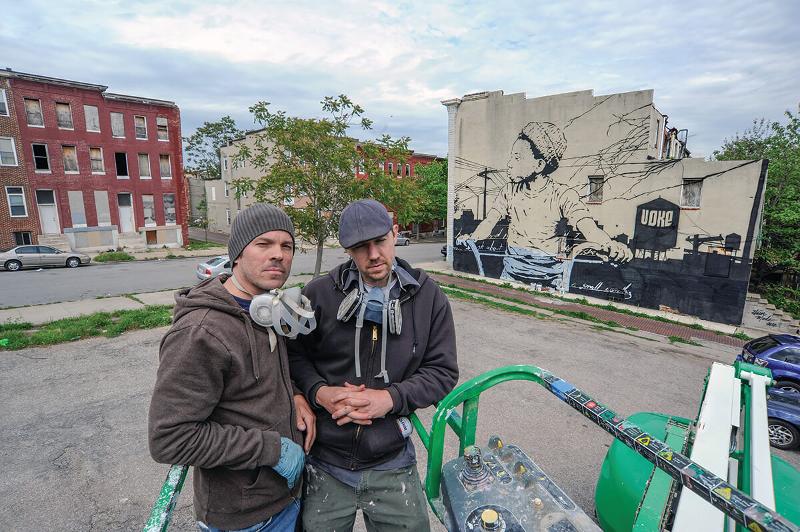In the vibrant streets of Baltimore, a hidden world of graffiti art comes to life. From the early days of graffiti in the city to the present, artists have left their mark on walls, buildings, and alleyways, telling stories that captivate and inspire. Join me on a journey through the rich history of Baltimore's graffiti art scene, as we delve into the origins, the artists, and the sociological significance behind this dynamic form of self-expression.
The Birth of Baltimore's Graffiti Art Scene
Explore the origins of graffiti art in Baltimore and the first artists who made their mark on the city's walls.
The graffiti art scene in Baltimore traces its roots back to the 1970s and 1980s, when the first tags and pieces started appearing on the city's walls. One of the earliest graffiti artists in Baltimore was BEAU, a Black worker employed by either Bethlehem Steel or the city, who used marking pens to create his distinctive tags. Another influential figure was REVOLT, who came from Manhattan to attend the Maryland Institute College of Art and left his mark on the city's walls.
As the graffiti art movement gained momentum, more young artists joined in, leaving their own tags and pieces across Baltimore. The punk scene at The Loft, a popular club at the time, also played a role in fostering the graffiti art culture. Artists like CUBA and DILLINGER made their mark, adding to the vibrant tapestry of graffiti art in the city.
The Evolution of Graffiti Techniques in Baltimore
Discover how graffiti artists in Baltimore embraced new techniques and mediums to push the boundaries of their art.
As the graffiti art scene in Baltimore grew, artists began to experiment with different techniques and mediums. Stain, one of Baltimore's renowned graffiti artists, started with markers and spray paint before transitioning to stenciling. His self-taught approach allowed him to explore new avenues of creativity and express his artistic vision.
With the rise of mural initiatives in Baltimore, graffiti artists found new opportunities to showcase their skills. The city's acclaimed Open Walls project in 2012 provided a platform for artists like Stain to create large-scale public murals that transformed the urban landscape. These initiatives not only beautified the city but also gave graffiti artists a legitimate outlet for their creativity.
The Sociological Significance of Graffiti Art in Baltimore
Uncover the deeper meaning behind graffiti art in Baltimore and its role in giving a voice to marginalized communities.
Graffiti art in Baltimore goes beyond mere vandalism or defacement of property. It serves as a powerful form of self-expression and a means for marginalized communities to be heard and seen. For many young artists growing up in challenging environments, graffiti art becomes a way to navigate the complexities of their surroundings and find a sense of purpose.
Through their art, graffiti artists in Baltimore shed light on social issues, express their identities, and challenge the status quo. It is a form of resistance and a way to reclaim public spaces. By documenting the early history of graffiti in Baltimore, artists like Stain aim to preserve the stories and experiences of a vibrant art movement that continues to evolve and inspire.
Conclusion
Baltimore's graffiti art scene is a vibrant and dynamic expression of creativity and self-expression. From its early beginnings to the present day, graffiti artists have left their mark on the city's walls, telling stories and challenging the status quo. Through their art, they have given a voice to marginalized communities and brought attention to social issues. Graffiti art in Baltimore is more than just vandalism; it is a powerful form of artistic expression that continues to evolve and inspire.
FQA :
What is the sociological significance of graffiti art in Baltimore?
Graffiti art in Baltimore serves as a means for marginalized communities to be heard and seen. It allows artists to express their identities, shed light on social issues, and challenge the status quo. It is a form of resistance and a way to reclaim public spaces.
How did graffiti techniques evolve in Baltimore?
Graffiti artists in Baltimore embraced new techniques and mediums as the art form evolved. From markers and spray paint to stenciling and large-scale murals, artists pushed the boundaries of their art and found new avenues for creativity.
What is the early history of graffiti in Baltimore?
The early history of graffiti in Baltimore can be traced back to the 1970s and 1980s. Influential artists like BEAU and REVOLT left their mark on the city's walls, while the punk scene at The Loft fostered a vibrant graffiti art culture.

